Microsoft unveils new Surface Pro, Go, Duo and Studio devices
The new hybrid devices have been built to showcase Windows 11
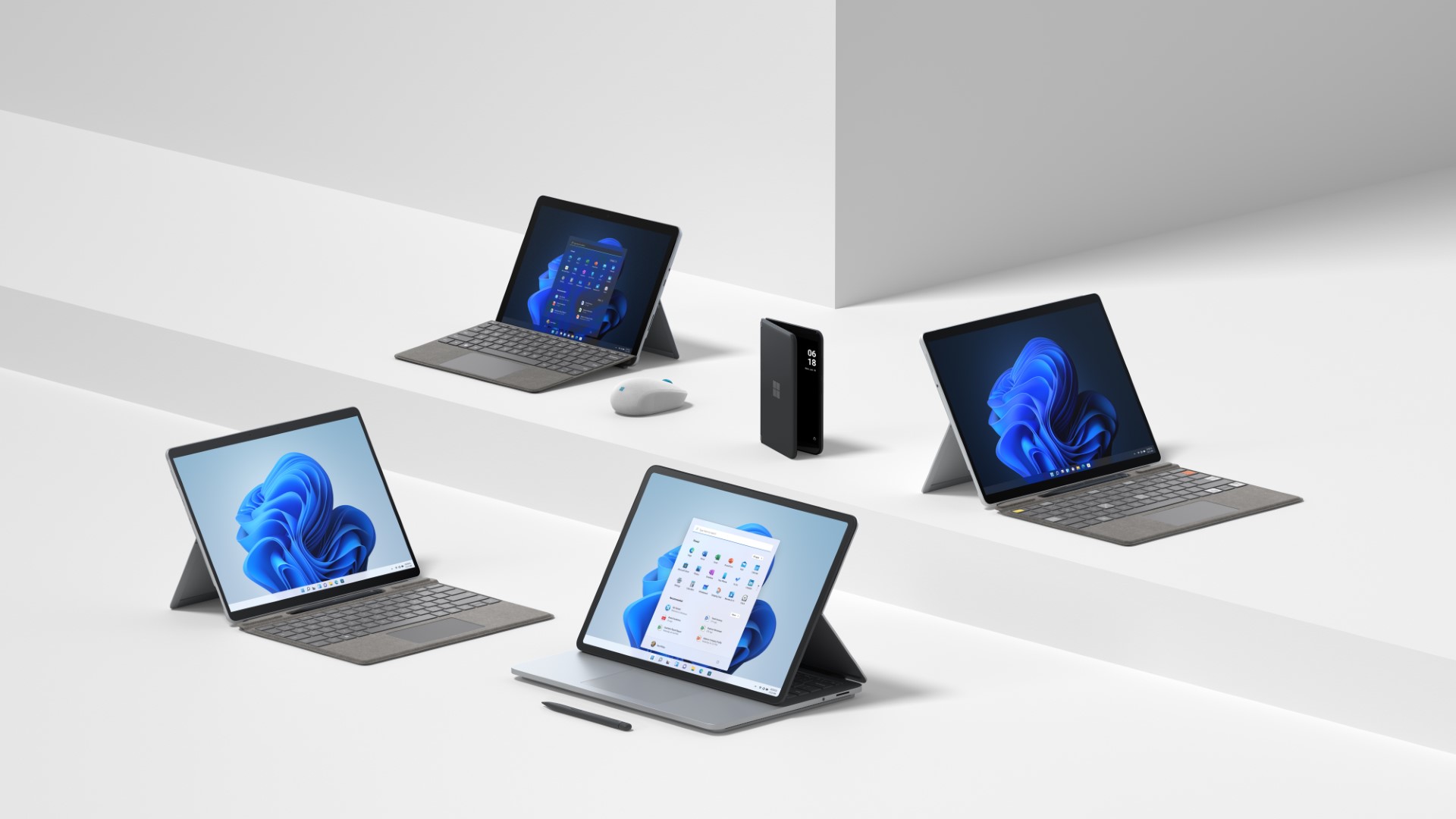

Microsoft has today unveiled a series of new additions to its Surface family of first-party devices, including the Surface Pro 8, the Surface Go 3, the Surface Duo 2 and an all-new product, the Surface Laptop Studio.
Revealed in a livestreamed event, the new products have been designed from the ground up to showcase and complement Windows 11, the forthcoming update to the company’s flagship desktop OS. Microsoft also placed a key emphasis on their suitability for flexible and hybrid working environments, thanks to their portability and versatility.
"Throughout our history as Surface, we have seen that the most meaningful experiences come from innovation at the intersection of hardware and software," the company's vice-president of Microsoft devices Pete Kyriacou wrote on the Windows blog. "This idea was the catalyst for Surface – to build hardware that would not only be a stage for Windows but push the platform and the ecosystem forward."
"Today, on the threshold of Windows 11, we are revealing the largest update to the Surface portfolio in its history. With PixelSense displays, new pen technology, premium mics and cameras, powerful silicon and versatile form factors, the new Surface devices are designed to take Windows innovation to the next level."
Some products, like the Surface Pro X and Surface Go 3, have seen only minor hardware updates, while the Surface Pro 8 and Surface Duo 2 are receiving more substantial redesigns. The centrepiece of the presentation, however, was the new Surface Laptop Studio, which merges the company’s professional-grade workstation product, the Surface Book, with its desktop all-in-one Surface Studio.
The company also unveiled some new accessories, including a pack of accessibility-aiding stickers, a mouse made of recovered ocean plastics, and a new Surface Slim Pen 2, which features a custom Microsoft G6 processor for inking and small mechanical vibrations to mimic the feel of pen on paper.
Surface Go 3
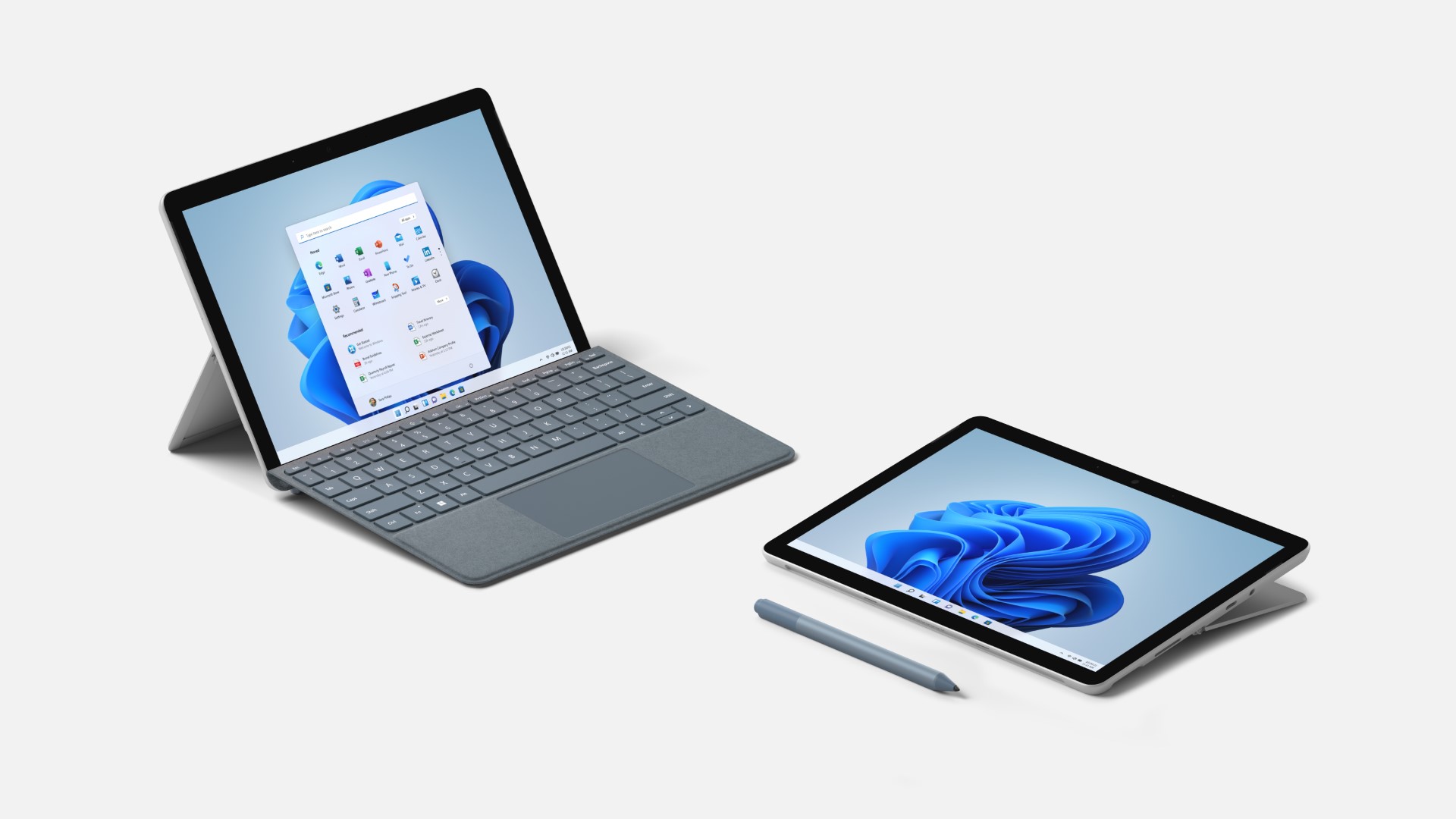
Microsoft’s ultra-compact Surface Go range is a direct competitor to the likes of the Apple iPad mini, and its previous iteration was one of our favourite laptops of last year for its combination of portability and surprisingly capable performance. Little has been changed for this iteration; the size, weight, RAM and storage allocations remain the same, and there are no significant additional features.
Get the ITPro daily newsletter
Sign up today and you will receive a free copy of our Future Focus 2025 report - the leading guidance on AI, cybersecurity and other IT challenges as per 700+ senior executives
The biggest difference between the Surface Go 3 and its predecessor is an upgraded CPU. Customers can choose between a dual-core Intel Pentium Gold 6500Y processor or a quad-core 10th-gen Intel Core i3-10100Y chip, improving on the previous model’s 8th-gen component. This should mean even greater performance than previously - although it may have an impact on battery life.
The Surface Go 3 is launching in the UK on 5 October, with a starting price of £449 inc VAT for business customers, and £369 for consumer customers.
Surface Pro X
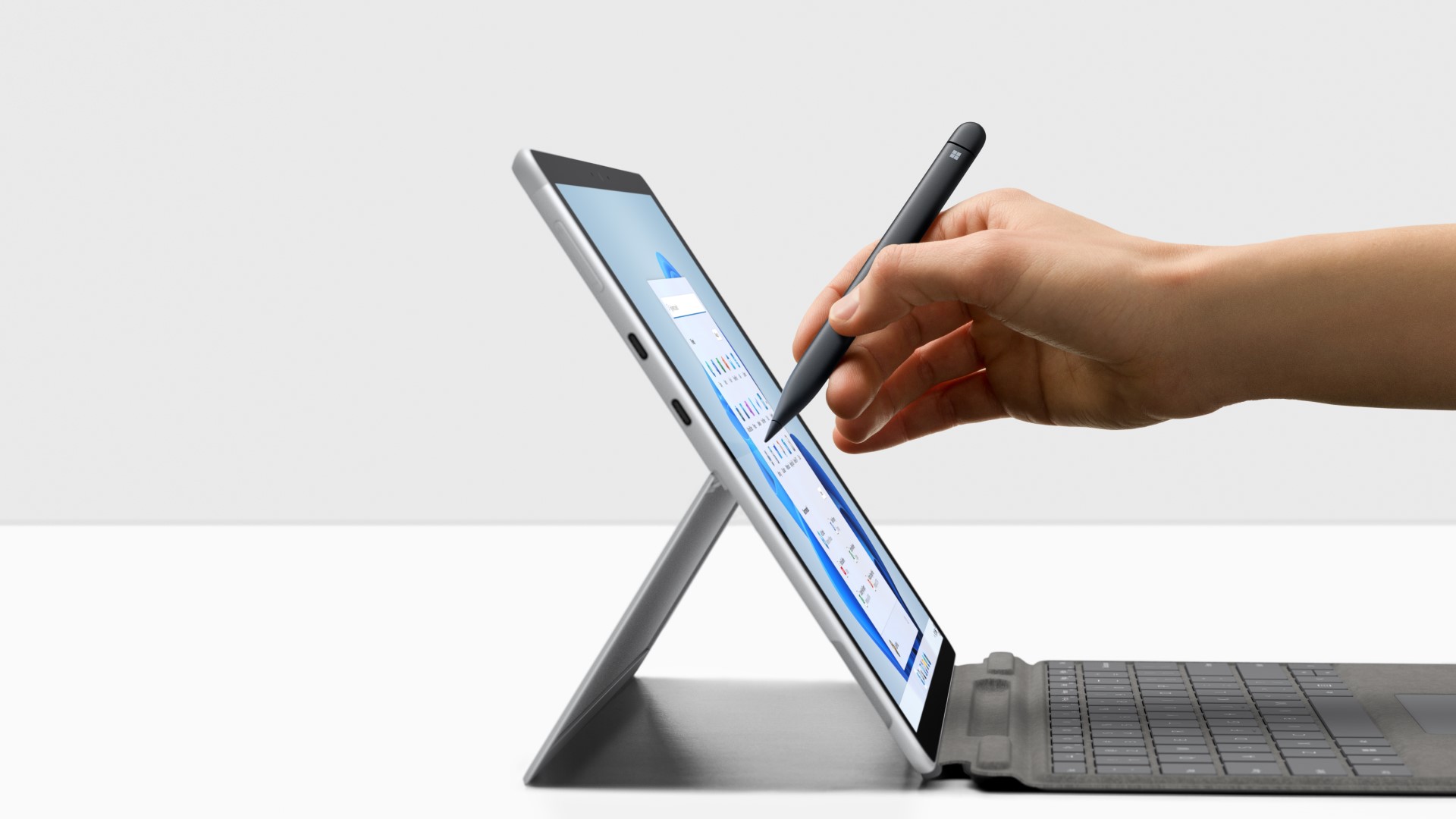
Even fewer changes have been made to the Surface Pro X, which now has a Wi-Fi only option in addition to the existing LTE-capable variant. Otherwise, the internal hardware and external design are identical to the original model. This new version is slightly cheaper, however, starting at just $899 in the US, compared to $999 for the LTE model. UK pricing is currently unknown, but expect it to follow a similar pattern.
RELATED RESOURCE

UK attitudes to the new world of work
The way we work has changed – but is your business equipped for it?
Improvements have been made on the software side, though. The Pro X runs on an ARM chip, and can’t natively run applications designed for Intel-based PCs. To alleviate potential compatibility issues, Microsoft has ensured that more applications now have ARM-optimised versions, and Windows 11 on ARM can now run both x86 and x64 apps via improved emulation capabilities.
In addition to this, the company has also increased support for printer drivers and security software for commercial customers running Windows on ARM via its App Assure programme.
Surface Duo 2
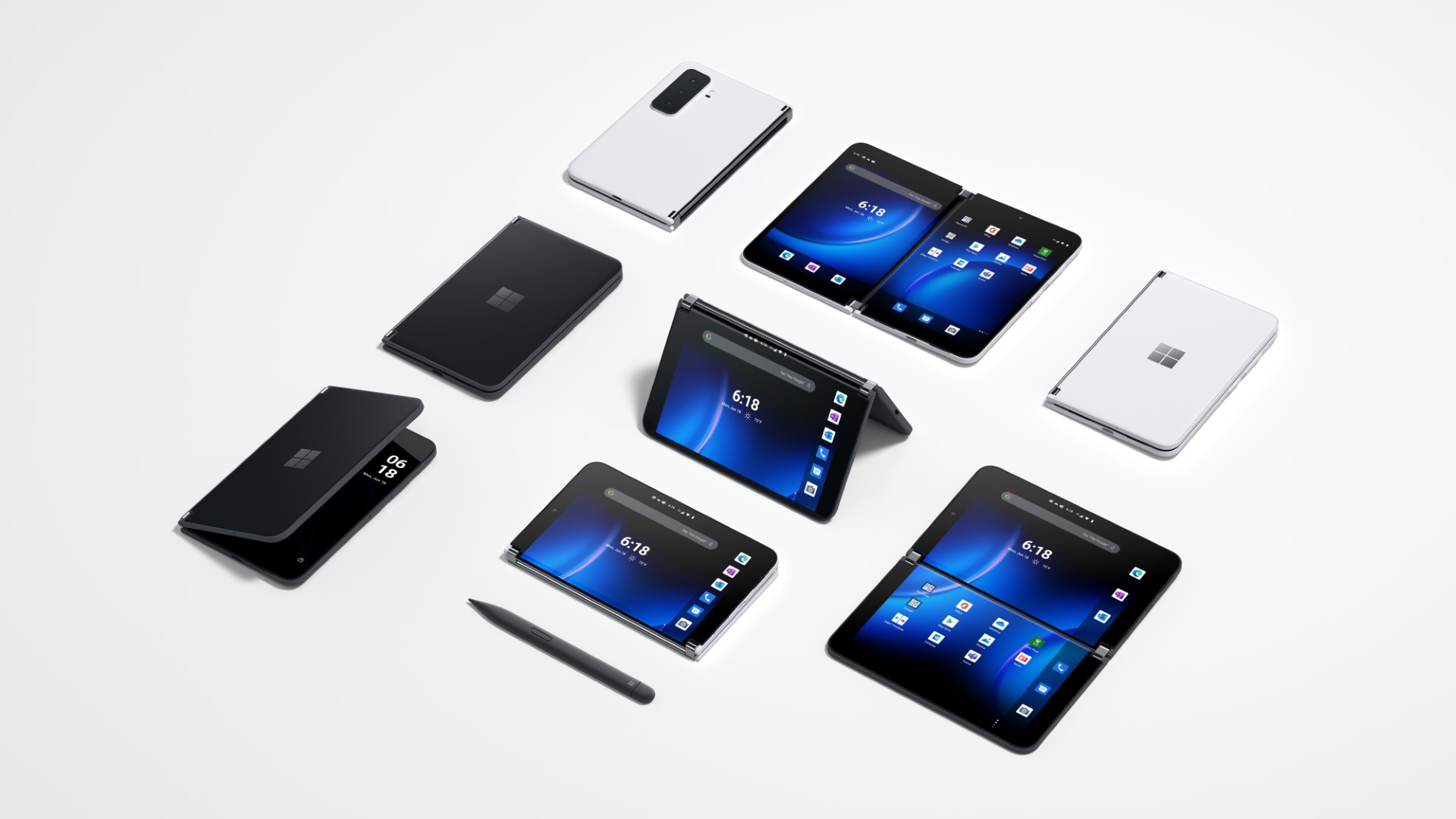
In 2019, Microsoft shocked the tech industry by launching an Android-based first-party smartphone, the Surface Duo. Not only that, but it was also its first entry into the burgeoning foldables market. The company is now following that up with a successor, the Surface Duo 2.
The new device addresses many criticisms of the original, and includes NFC for contactless payments as well as support for Wi-Fi 6 and 5G connectivity. There’s a new 512GB storage tier, as well as a larger 8GB RAM allocation, a 20% bigger battery and a beefed-up Snapdragon 888 processor - the same model seen in the Xiaomi Mi 11 and Oppo Find X3 Pro.
To accommodate these extra capabilities, the weight and thickness have both increased by around 12%, clocking in at 284g and 5.5mm, respectively. The twin screens are also slightly larger, increasing from 5.6in to 5.8in, and they’re both sporting a 90Hz refresh rate along with protection from Corning’s Gorilla Glass Victus. The per-screen resolution of 1,344 x 1,892 is largely unchanged, though.
The triple-lens camera array features a wide-angle, ultra-wide and telephoto lens. Both wide and ultra-wide lenses include optical image stabilisation and phase-detection autofocus, and all three lenses work together to offer 10x digital zoom.
Microsoft has also added a ‘glance bar’ feature, which showcases incoming notifications along the hinge when the device is closed, as well as displaying volume and charge levels. Be prepared to spend a fair bit, though, as the Duo 2 will start at £1,389 for businesses and £1,349 for consumers, with availability starting from 21 October.
Surface Pro 8
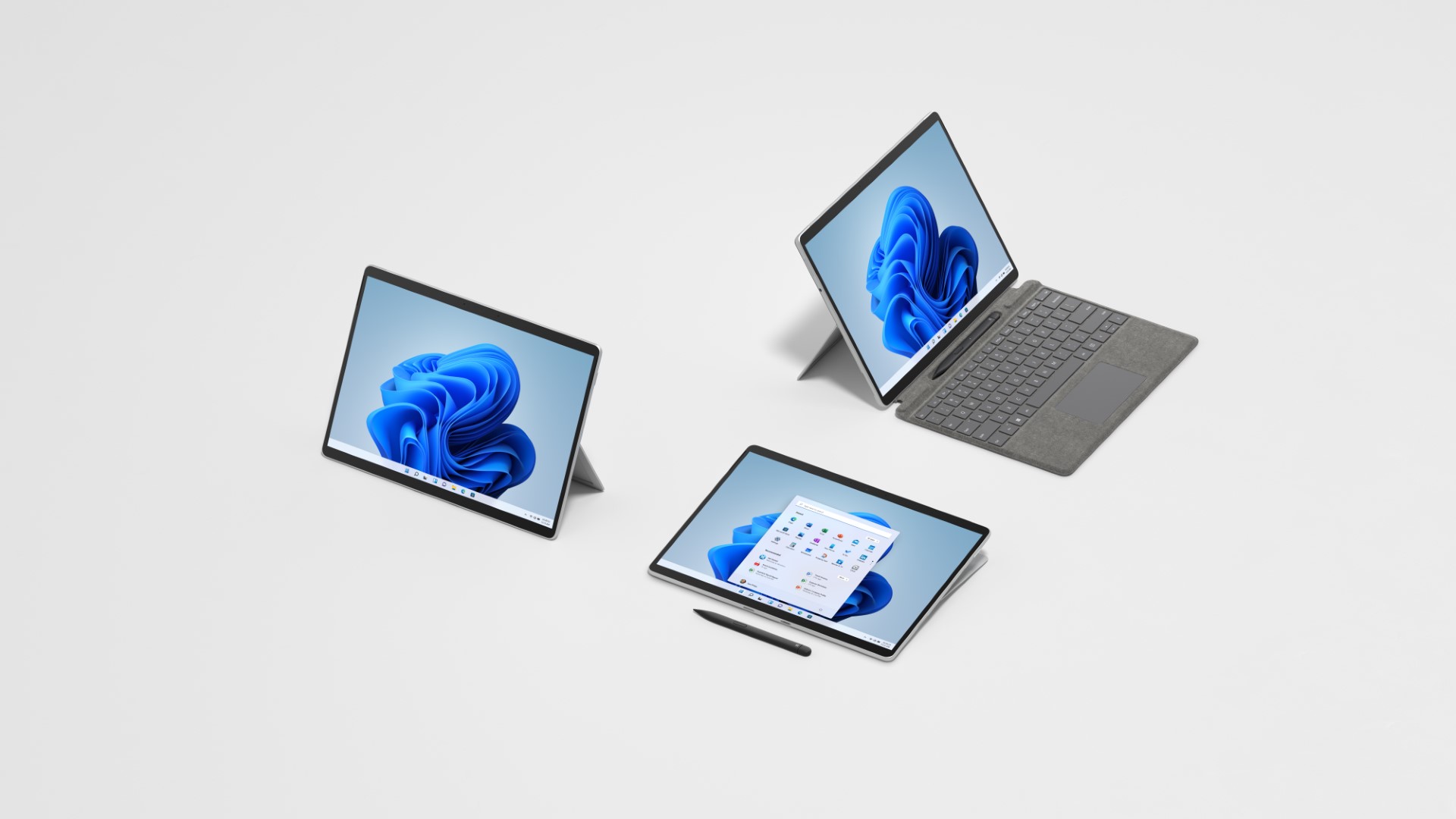
Of all the newly-updated laptops, the Surface Pro 8 is the most drastically different, which is fitting as the last couple of iterations have seen little more than hardware refreshes. The most noticeable upgrade is the display, which is 11% larger than the Surface Pro 7 thanks to slimmer bezels. It’s also 12% brighter and its resolution of 2,880 x 1,920 is 11% higher. The panel runs at 60Hz by default, but can reach up to 120Hz when necessary. While its dimensions are almost identical, the Surface Pro 8 is around 100g heavier than its predecessor.
Unsurprisingly, the internal hardware has been overhauled, with an increased top-level RAM tier of 32GB, and 11th-gen Intel Core processors. Consumers can choose between Core i5 and Core i7 options, while business customers also have access to a lower-end Core i3 model. Like the Surface Pro 7+, customers can opt for a removable SSD in capacities up to 256GB, or non-removable drives up to 1TB. As with the 7+, however, the removable SSD is intended for data security purposes, rather than for upgradability or servicing.
The final major addition is a second USB-C port, and both support the most recent Thunderbolt 4 standard for faster throughput. However, this does come at a cost: the Surface Pro 8 no longer includes a full-size USB-A port, which may make it somewhat more frustrating to use with peripherals.
Business pricing is not yet known, although consumers can get their hands on the Surface Pro 8 from 28 October, with a starting price of £999. Business users, unfortunately, will have to wait until next year.
Surface Laptop Studio
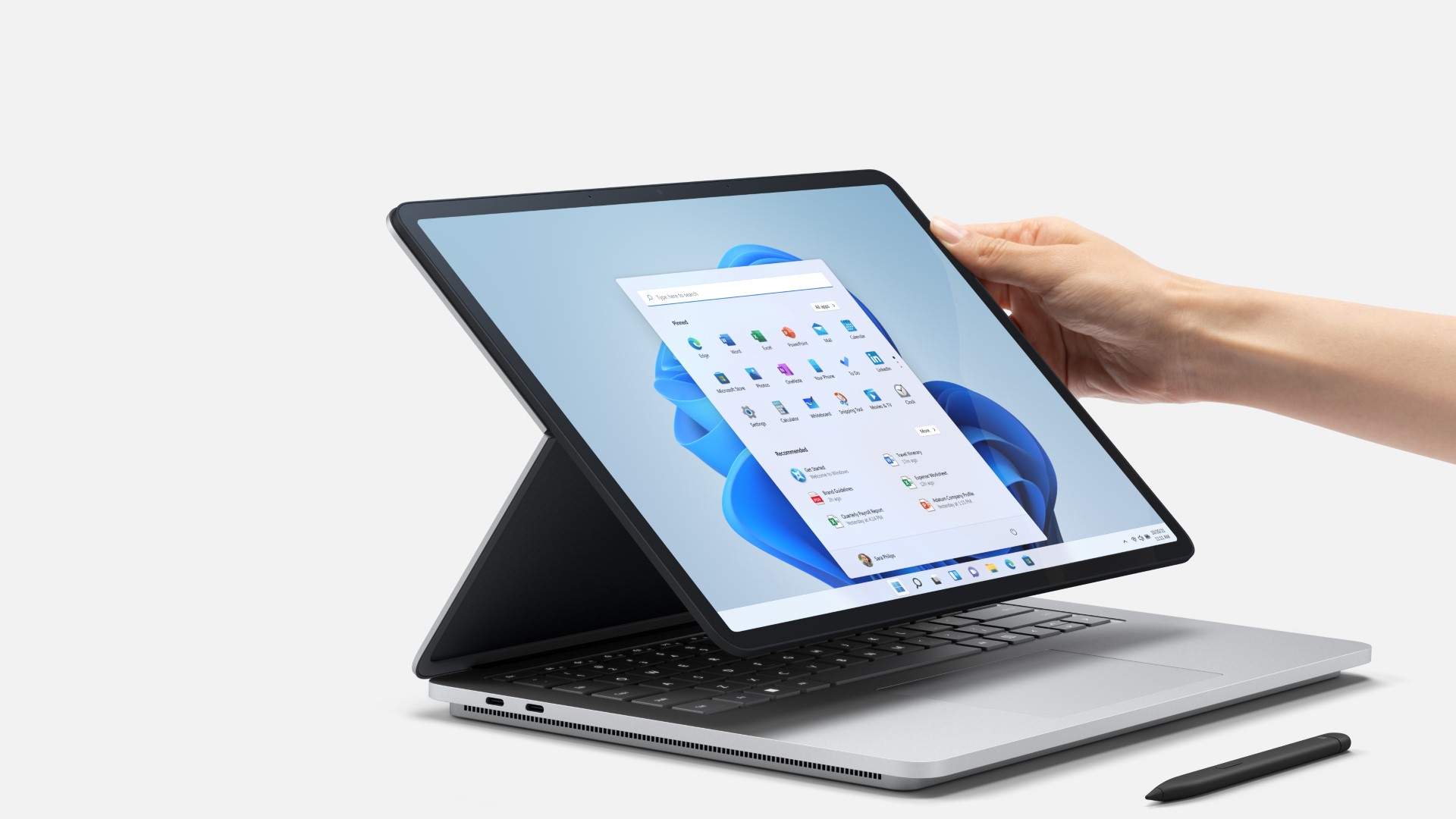
The most significant announcement, however, was the new Surface Laptop Studio. Designed with a focus on enterprise applications like graphic design and software development, the new laptop is an evolution of the high-performance sensibilities of the Surface Book range, but with a unique twist.
The screen is attached to the lid via a secondary hinge halfway up the panel, which allows the screen to be pulled away from the lid and angled back for an easel-style experience, or laid flat against the chassis. The panel itself is a 14.4in touchscreen model, featuring a 2,400 x 1,600 resolution and a maximum refresh rate of 120Hz.
This is paired with Surface Pen compatibility, and powerful hardware specifications to support creative tasks. Customers have a choice between two 11th-gen quad-core Intel H-series processors: the Core H35i5-11300H and the Core H35i7-11370H. This is backed up by an Nvidia RTX 3050 Ti mobile GPU, and commercial customers also have the option of an enterprise-grade RTX A2000 laptop chip for more rigorous scientific or engineering tasks.
There’s also either 16GB or 32GB of RAM, with up to 2TB in SSD capacity. Like the Surface Pro 8, these SSDs are also removable - although they’ll likely come with the same caveats. Connectivity is provided via a pair of USB Type-C 4.0 ports which support Thunderbolt 4, as well as Wi-Fi 6.
All of these features add up, however, and the Surface Laptop Studio is a bit of beast, with a starting weight of 1.7kg, or 1.8kg for the Core i7 version. We're expecting the price tag to be monster too, but we won't know just how much it is until closer to its 2022 release date.
Adam Shepherd has been a technology journalist since 2015, covering everything from cloud storage and security, to smartphones and servers. Over the course of his career, he’s seen the spread of 5G, the growing ubiquity of wireless devices, and the start of the connected revolution. He’s also been to more trade shows and technology conferences than he cares to count.
Adam is an avid follower of the latest hardware innovations, and he is never happier than when tinkering with complex network configurations, or exploring a new Linux distro. He was also previously a co-host on the ITPro Podcast, where he was often found ranting about his love of strange gadgets, his disdain for Windows Mobile, and everything in between.
You can find Adam tweeting about enterprise technology (or more often bad jokes) @AdamShepherUK.
-
 Bigger salaries, more burnout: Is the CISO role in crisis?
Bigger salaries, more burnout: Is the CISO role in crisis?In-depth CISOs are more stressed than ever before – but why is this and what can be done?
By Kate O'Flaherty Published
-
 Cheap cyber crime kits can be bought on the dark web for less than $25
Cheap cyber crime kits can be bought on the dark web for less than $25News Research from NordVPN shows phishing kits are now widely available on the dark web and via messaging apps like Telegram, and are often selling for less than $25.
By Emma Woollacott Published